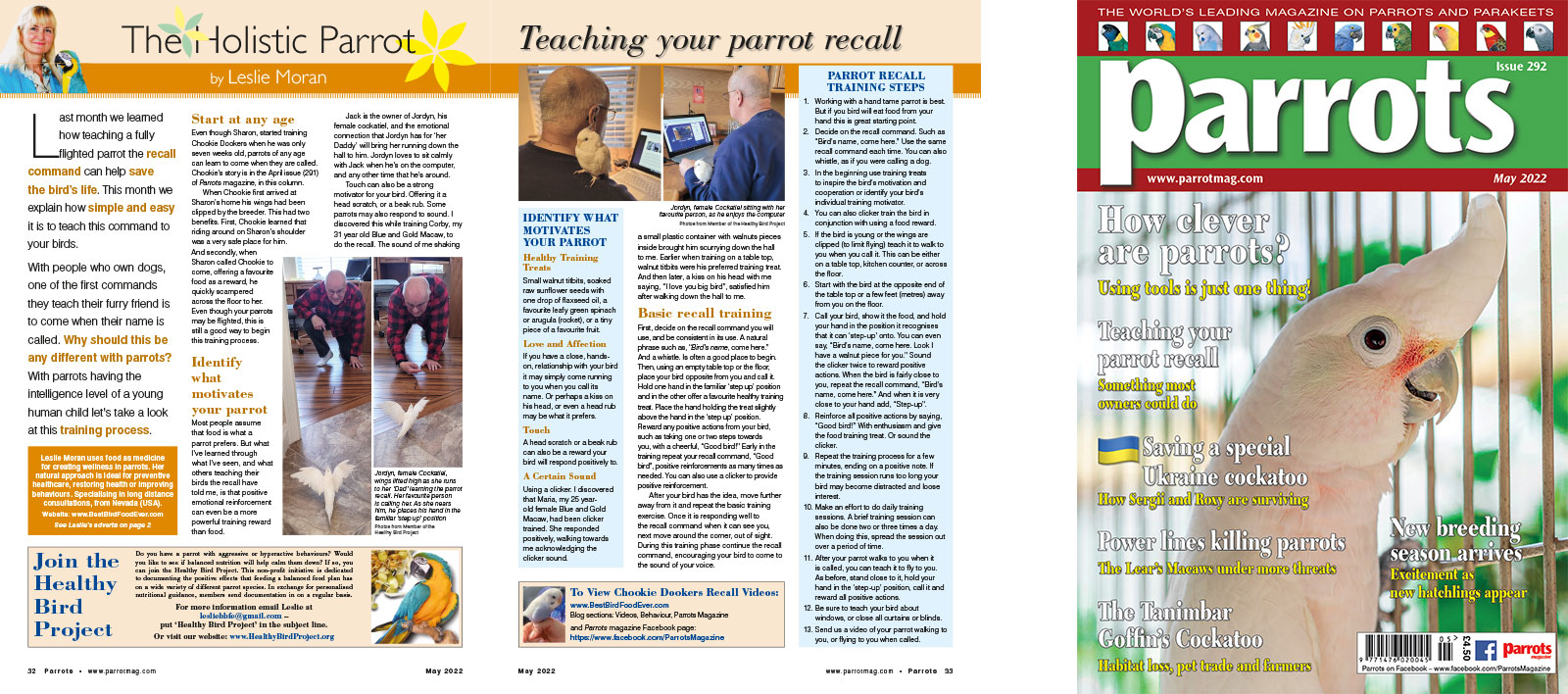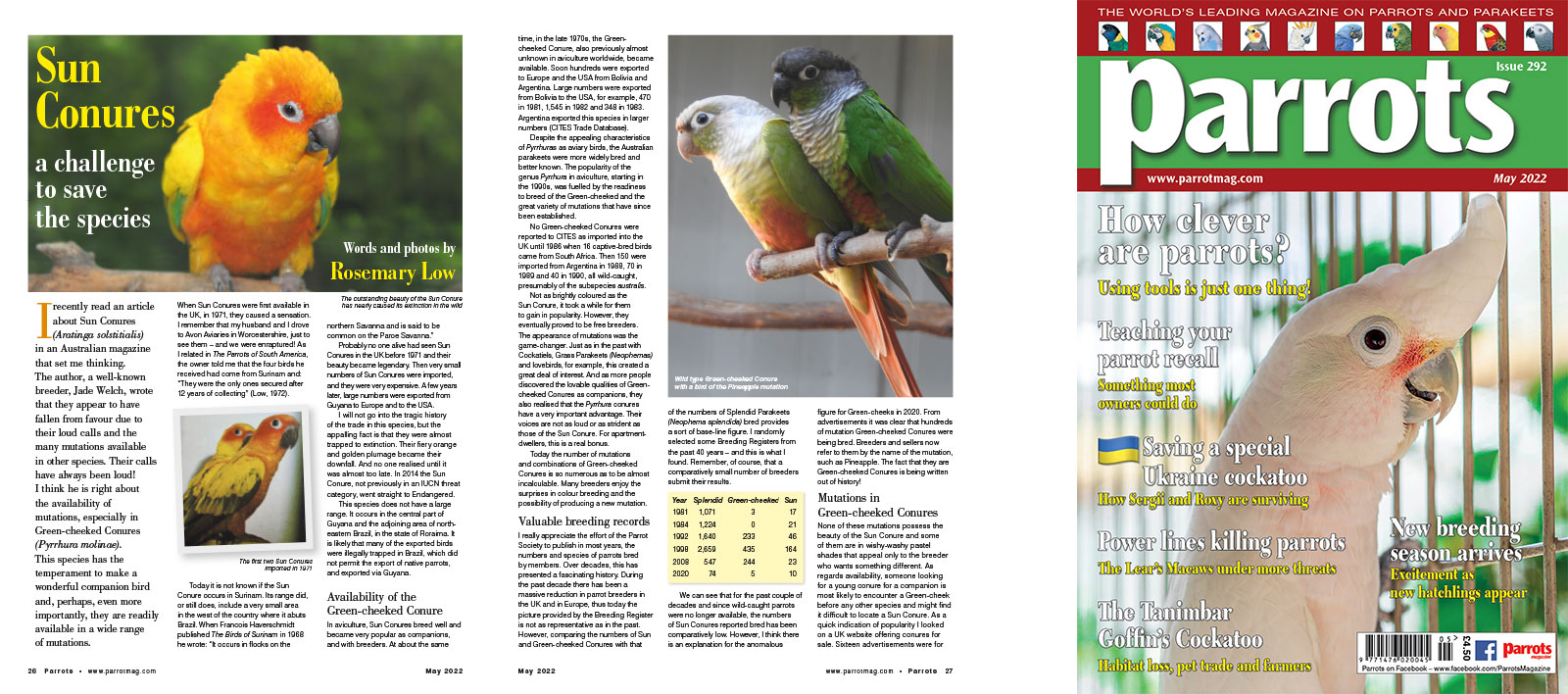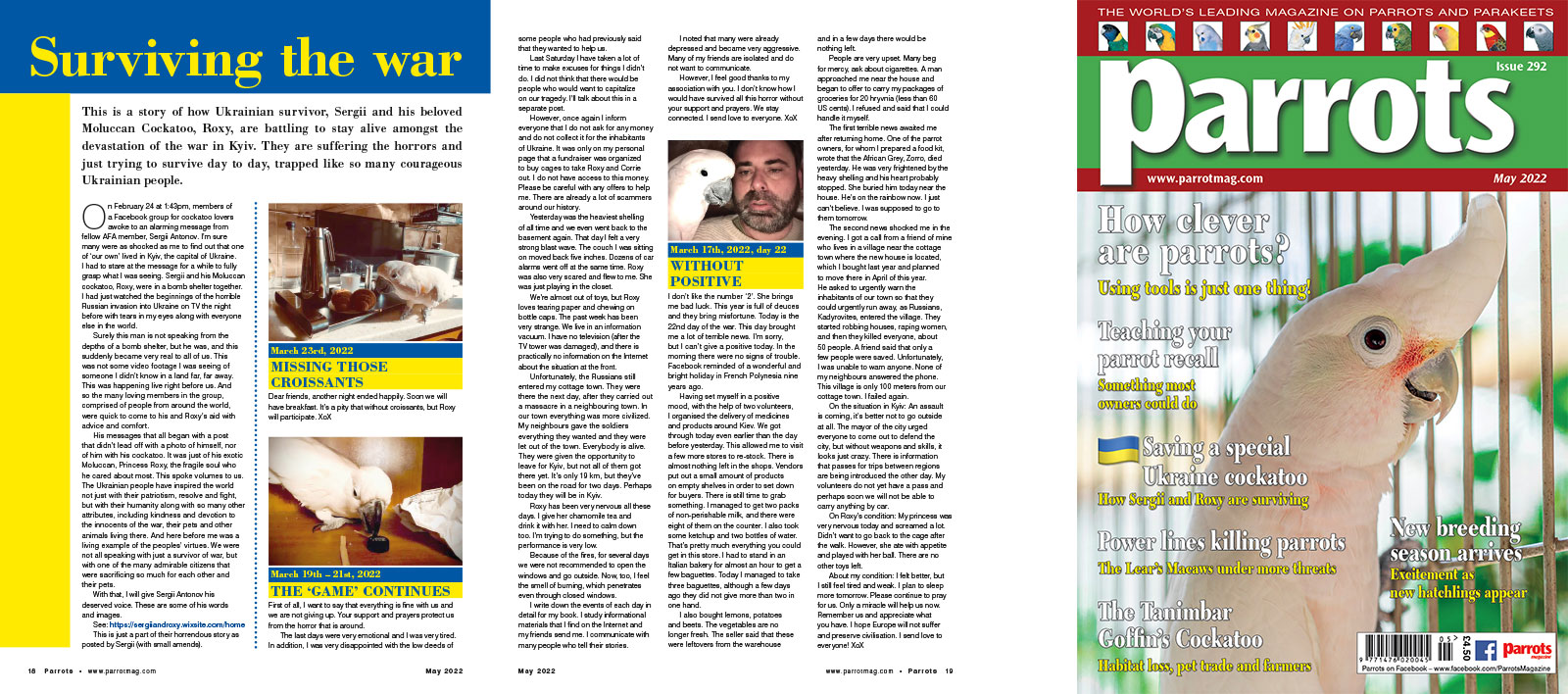
The subject of Goffin’s Cockatoos cognitive abilities has previously been included in Parrots magazine. In this article, Devorah Bennu PhD describes in more detail how the Goffin’s Cockatoos have created increased interest and inspired scientists to carry out more detailed research into these fascinating psittacines.
A new study finds that problem-solving cockatoos can combine simple tools to accomplish a task, which is a cognitive ability that only a very few primates were previously known to perform.
An international team of behavioural researchers at the Messerli Research Institute with the University of Veterinary Medicine in Vienna has discovered that Tanimbar Cockatoos, also known as Goffin’s Cockatoos or Goffin’s Corellas (Cacatua goffiniana), spontaneously use a combination of simple tools to accomplish a task, according to a recently published study. These inventive cockatoos taught themselves how to play ‘cockatoo golf’ using these tools.
The goal of this particular study was to understand whether these innovative parrots’ tool-using abilities are on par with those of early humans as demonstrated in a test inspired by the game of golf. This study is also part of a wider international and interdisciplinary project comparing children’s innovation and problem solving skills with those of cockatoos..
Buy Now!

The Holistic Parrot by Leslie Moran
Last month we learned how teaching a fully flighted parrot the recall command can help save the bird’s life. This month we explain how simple and easy it is to teach this command to your birds.
With people who own dogs, one of the first commands they teach their furry friend is to come when their name is called. Why should this be any different with parrots? With parrots having the intelligence level of a young human child let’s take a look at this training process.
Even though Sharon started training Chookie Dookers when he was only seven weeks old, parrots of any age can learn to come when they are called. Chookie’s story is in the April issue (291) of Parrots magazine, in this column.
When Chookie first arrived at Sharon’s home his wings had been clipped by the breeder. This had two benefits. First, Chookie learned that riding around on Sharon’s shoulder was a very safe place for him.
And secondly, when Sharon called Chookie to come, offering a favourite food as a reward, he quickly scampered across the floor to her. Even though your parrots may be flighted, this is still a good way to begin this training process..
Buy Now!

Words and photos by Rosemary Low
I recently read an article about Sun Conures (Aratinga solstitialis) in an Australian magazine that set me thinking. The author, a well-known breeder, Jade Welch, wrote that they appear to have fallen from favour due to their loud calls and the many mutations available in other species. Their calls have always been loud! I think he is right about the availability of mutations, especially in Green-cheeked Conures (Pyrrhura molinae). This species has the temperament to make a wonderful companion bird and, perhaps, even more importantly, they are readily available in a wide range of mutations.
When Sun Conures were first available in the UK, in 1971, they caused a sensation. I remember that my husband and I drove to Avon Aviaries in Worcestershire, just to see them – and we were enraptured! As I related in The Parrots of South America, the owner told me that the four birds he received had come from Surinam and: “They were the only ones secured after 12 years of collecting” (Low, 1972).
Today it is not known if the Sun Conure occurs in Surinam. Its range did, or still does, include a very small area in the west of the country where it abuts Brazil. When Francois Haverschmidt published The Birds of Surinam in 1968 he wrote: “It occurs in flocks on the northern Savanna and is said to be common on the Paroe Savanna.”.
Buy Now!

This is a story of how Ukrainian survivor, Sergii and his beloved Moluccan Cockatoo, Roxy, are battling to stay alive amongst the devastation of the war in Kyiv. They are suffering the horrors and just trying to survive day to day, trapped like so many courageous Ukrainian people.
On February 24 at 1:43pm, members of a Facebook group for cockatoo lovers awoke to an alarming message from fellow AFA member, Sergii Antonov. I’m sure many were as shocked as me to find out that one of ‘our own’ lived in Kyiv, the capital of Ukraine. I had to stare at the message for a while to fully grasp what I was seeing. Sergii and his Moluccan cockatoo, Roxy, were in a bomb shelter together. I had just watched the beginnings of the horrible Russian invasion into Ukraine on TV the night before with tears in my eyes along with everyone else in the world.
Surely this man is not speaking from the depths of a bomb shelter, but he was, and this suddenly became very real to all of us. This was not some video footage I was seeing of someone I didn’t know in a land far, far away. This was happening live right before us. And so the many loving members in the group, comprised of people from around the world, were quick to come to his and Roxy’s aid with advice and comfort.
Buy Now!




